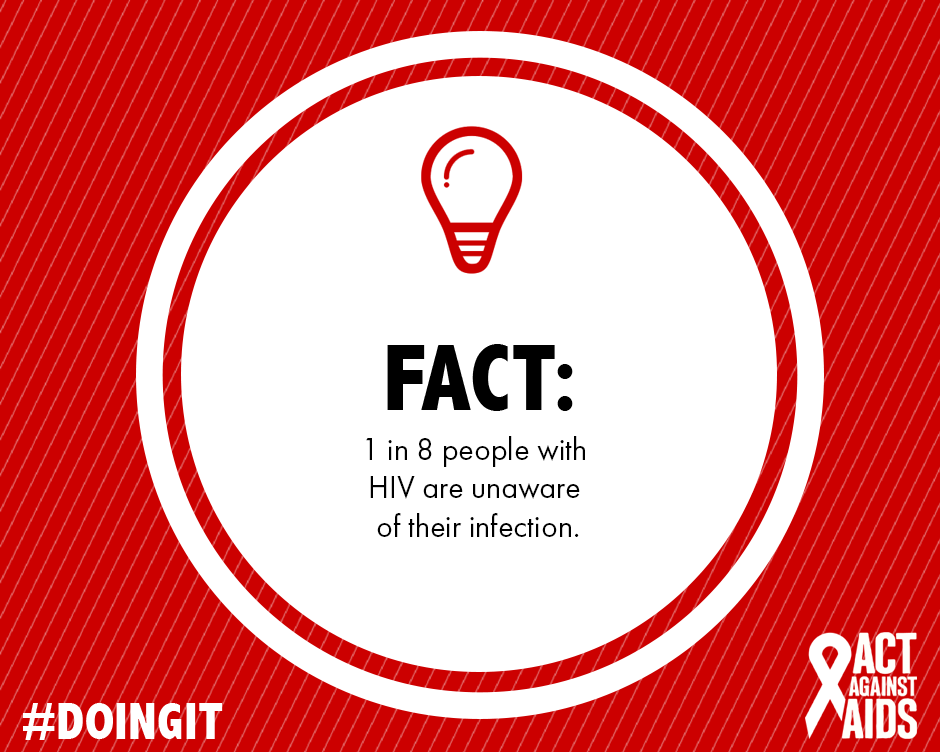In recognition of National HIV Testing Day, The Healthy Latina is participating in CDC’s Doing It, or Haciéndelo Blog Hop to share a range of perspectives on the importance of HIV testing. Check out the other posts from fellow Blog Hop participants and join the conversation online using #DoingIt and #NHTD.
Doing It: National HIV Testing Day Blog Hop
- AIDS.gov
- The Counter Narrative Project
- BenjaminDiCosta.com
- Healthy Black Men
- ShawnandGwenn.com/POZ
- Greg Revenj
HIV testing isn’t just important for the Latina community, it’s important to everyone who is sexually active, no matter what their background is. According to the CDC, 1 in 8 people don’t know they are living with HIV. An estimated 1.2 million people in the United States are living with HIV, including 156,300 people who do not know they are infected.
Each year, nearly 45,000 people are diagnosed with HIV, and 30% of new HIV infections are transmitted by people who are living with undiagnosed HIV. For those who are living with undiagnosed HIV, testing is the first step in maintaining a healthy life and reducing the spread of HIV. Almost everyone should be doing it! CDC recommends that everyone between the ages of 13 and 64 get tested for HIV at least once as part of routine health care and that people with certain risk factors get tested more often. Testing is the critical first step in getting care if need be and preventing transmission to others. Doing it is easy! Testing for HIV is free, fast, and confidential.
In 2013, Hispanics/Latinos accounted for almost one quarter of all estimated new diagnoses of HIV infection in the United States and 6 dependent areas, despite representing about 17% of the total US population. Also in 2013, Hispanics/Latinos accounted for 23% (10,888) of the estimated 48,145 new diagnoses of HIV infection in the United States and six dependent areas. Of those, 85% (9,266) were in men, and 15% (1,610) were in women. Gay, bisexual, and other men who have sex with men accounted for 81% (7,527) of the estimated HIV diagnoses among Hispanic/Latino men in 2013. The annual number of diagnoses among Hispanic/Latino gay and bisexual men has increased 16% since 2008.
For sexually active Latinas, this is a huge concern. It can be difficult to have a conversation about sexual history and HIV with a partner, but this conversation is necessary! Your health and the health of someone you love and care about is critical. Encouraging a partner to be tested for HIV is necessary.
Here are a few tips for starting the HIV testing conversation with your partner:
- Remind them how much they mean to you and that you care about them
- Offer to go together
- Share some statistics demonstrating how critical it is for everyone
- Make reference to a TV show or movie that talked about HIV (“I was recently watching Sex and the City and Samantha was afraid to get an HIV test, have you been tested?”)
- Choose a place and time that allows for a comfortable conversation (not in a crowded environment)
People with HIV who know they are infected can receive treatment. Thanks to recent scientific discovery, HIV treatments (antiretroviral therapy, or ART) are available and can keep someone healthy for many years. Studies indicate that all people living with HIV, including those with early infection, benefit from ART. Treatment with antiretroviral medications lowers the level of HIV in the blood (viral load), reduces HIV-related illness, and reduces the spread of HIV to others. Taking ART the right way every day can reduce an HIV-positive person’s chance of transmitting HIV by as much as 96%.
People living with HIV who know they are infected can also make other decisions that lower their risk of transmitting HIV to a partner. Studies have shown that many people with HIV who know they are infected avoid behaviors that might spread the infection to others with whom they have sex or share needles. People who get tested and learn they are HIV-negative can also make decisions about sex, drug use, and health care that can protect them from HIV. For example, taking HIV medications daily, called preexposure prophylaxis or PrEP, can prevent HIV infection in persons who are HIV-negative and at very high risk for HIV.
As with many taboo health issues, cultural factors may increase the risk of HIV infection. Some Hispanics/Latinos might not seek testing, counseling, or treatment if infected because of stigma or fear of discrimination. Traditional gender roles, cultural norms (“machismo,” which stresses virility for Hispanic/Latino men, and “marianismo,” which demands purity from Latinas), and the stigma around homosexuality may add to prevention challenges. We can change the dialogue around HIV and encourage our friends and family members to get tested.
Getting tested for HIV, alone or with a partner, is critical to protecting yourself. To find a testing site near you, call 1-800-CDC-INFO (232-4636); visit cdc.gov/DoingIt; or text your ZIP code to KNOW IT



Knowing your HIV status gives you powerful information to help keep you and your partner healthy.
Yes! Thank you for commenting! Knowing your status is huge!